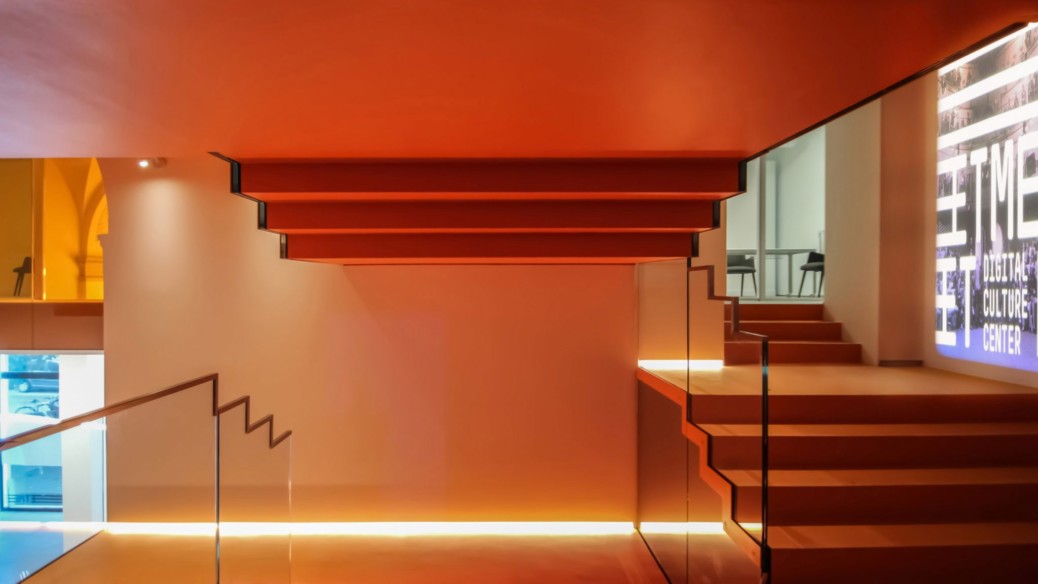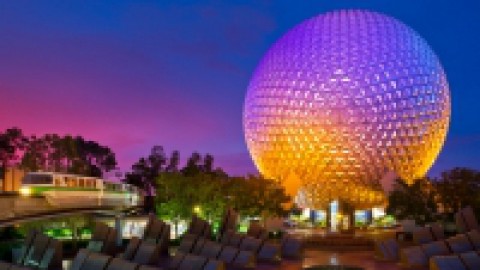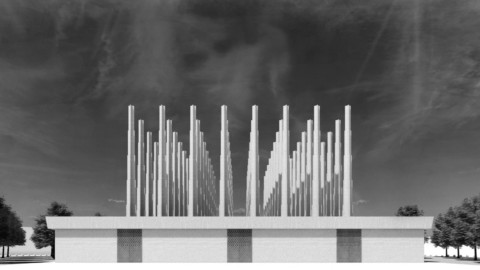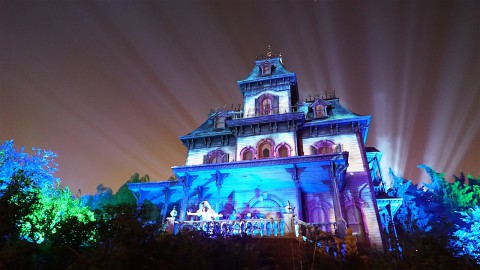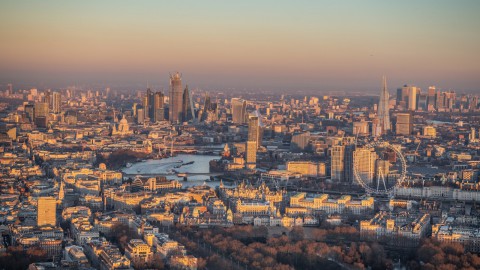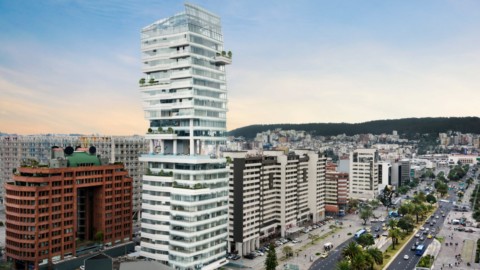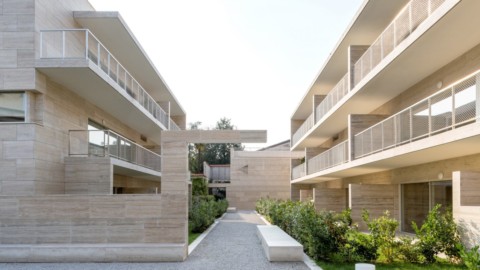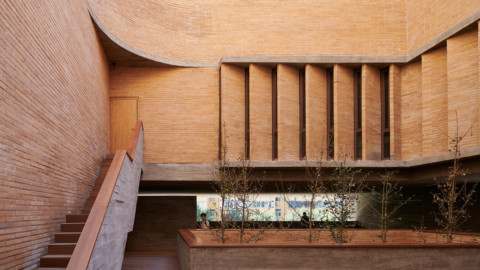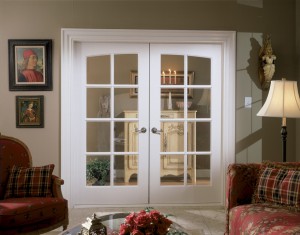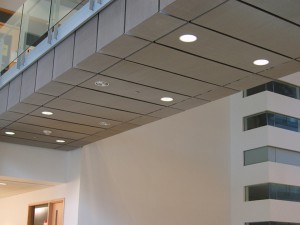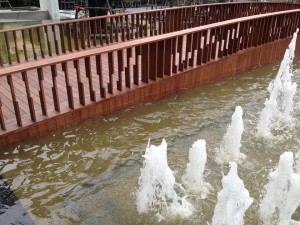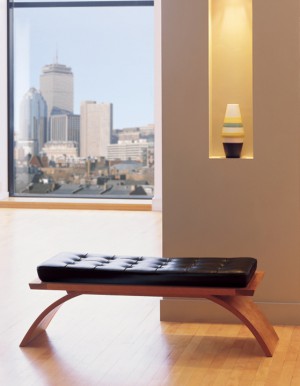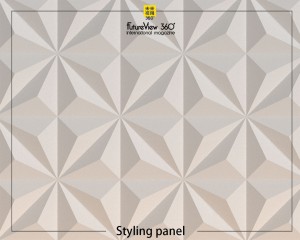Italian architect Carlo Ratti has unveiled MEET, a centre for digital culture in Milan designed to maximise chance encounters between visitors.
Located in a historic palazzo in the Porta Venezia neighbourhood in Milan, the centre centres around an orange staircase inserted into a 15-metre-high stairwell that doubles as a performance and meeting space.
Carlo Ratti Associati said the project explores “the meaning of physical space in a digital world”.
“We have used architecture to produce serendipity and new weak social ties, which rarely happen in the digital world,” said the studio. “This results in the hybridization of different kinds of spaces, as we have seen happening during the pandemic.”
“For instance, the central stairwell also becomes a theatre, a café and a working/meeting space.”
意大利建築師卡洛·拉蒂(Carlo Ratti)推出了MEET,這是米蘭的數字文化中心,旨在最大程度地增加遊客之間的相遇機會。
中心位於米蘭的Porta Venezia街區一棟歷史悠久的宮殿中,中心圍繞一個橙色樓梯,該樓梯插入15米高的樓梯間,可兼作表演和會議空間。
Carlo Ratti Associati說,該項目探討了“數字世界中物理空間的意義”。
該工作室說:“我們已經使用建築來產生偶然性和新的薄弱的社會紐帶,這在數字世界中很少發生。” “這導致了不同種類空間的混合,正如我們在大流行期間所看到的那樣。”
“例如,中央樓梯間也變成了劇院,咖啡館和辦公/會議空間。”
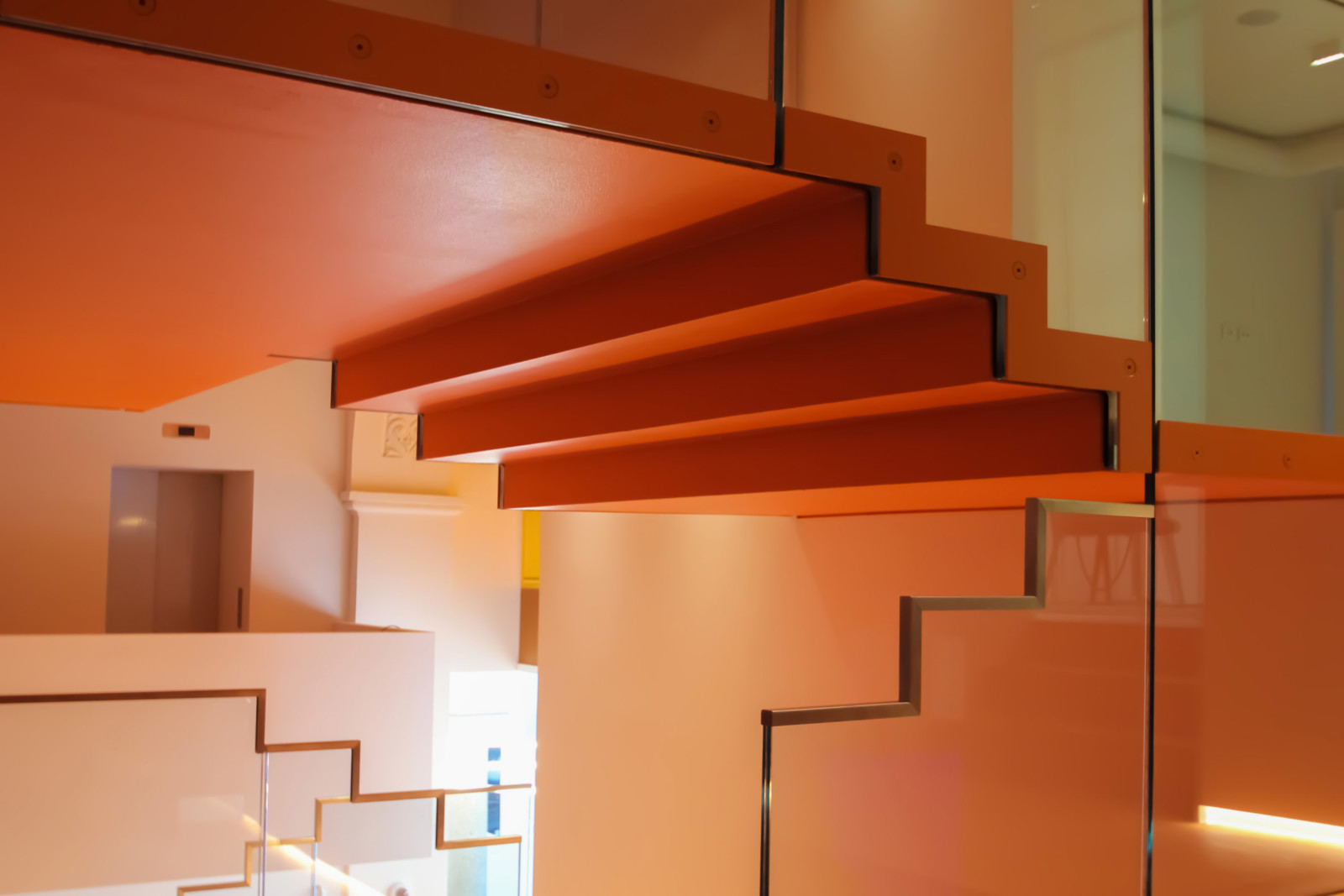
The design was informed by an earlier renovation of the space carried out by Milanese designer Gae Aulenti at the end of the 20th century.
“We started from Aulenti’s intuition to create a new staircase in the middle of the building but redesigned it to turn it into a 15-metre-high vertical plaza,” Ratti told Dezeen as he shared exclusive photos of the project.
“The plaza should become the backdrop for informal presentations and everyday casual encounters. Furthermore, it fulfils a more traditional function to connect all the spaces of the MEET centre across five or six different levels.”
該設計得益於20世紀末米蘭設計師Gae Aulenti對空間進行的早期翻新。
“我們從Aulenti的直覺開始,在建築物的中間創建了一個新樓梯,但對其進行了重新設計,將其變成了15米高的垂直廣場,” Ratti在分享該項目的獨家照片時告訴Dezeen。
“廣場應該成為非正式演講和日常休閒聚會的背景。此外,它還具有更傳統的功能,可以將MEET中心的所有空間連接成五個或六個不同的層次。”
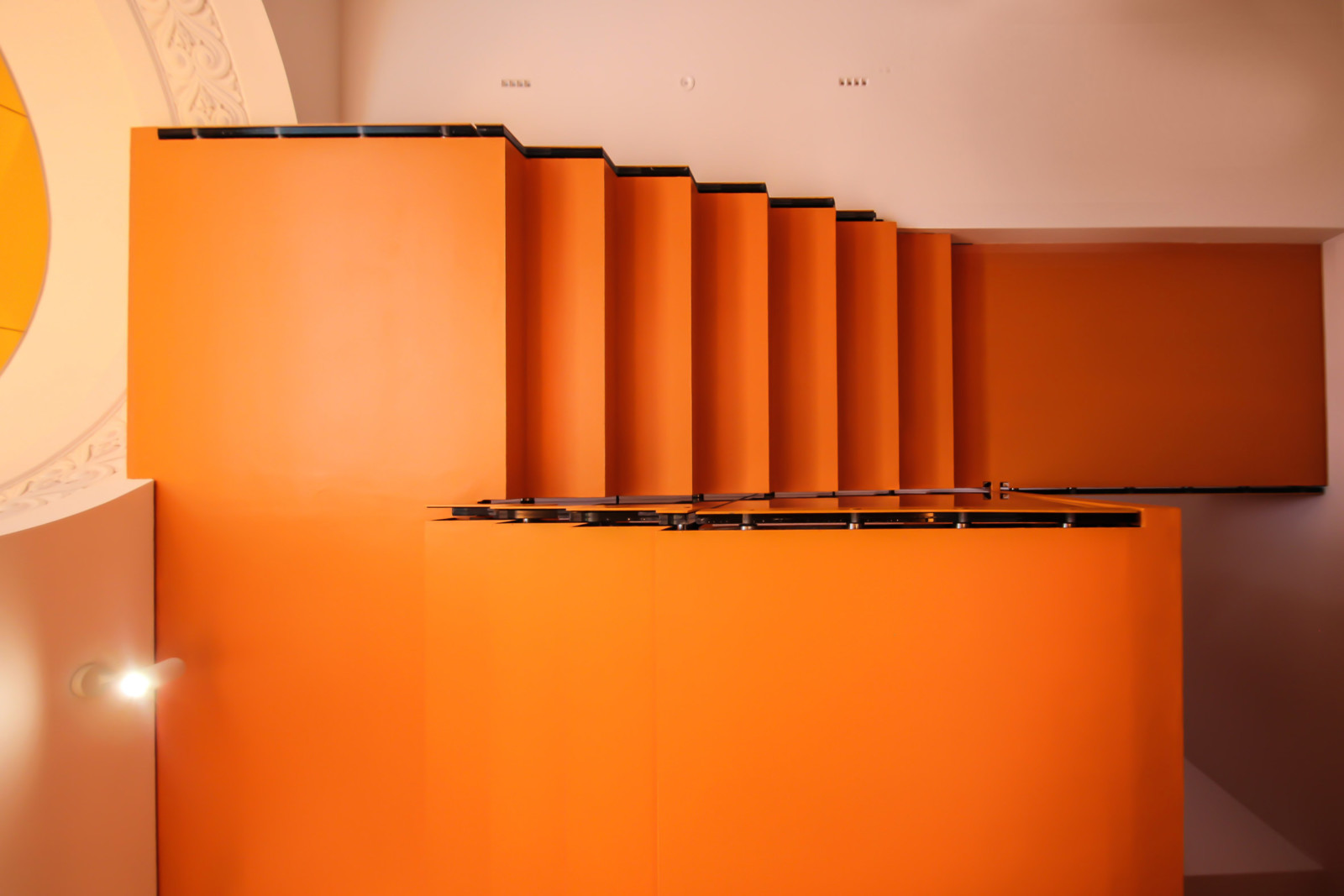
Carlo Ratti Associati, together with architect Italo Rota, renovated the 1,500-square-metre (16,000-square-feet) space across three levels. As well as the plaza it now has a reconfigurable auditorium and movie theatre, a cafe and an immersive hall for digital installations.
Ratti began working on the project a couple of years ago, before the coronavirus pandemic struck, and believes the brief – which focused on the meaning of physical space in a digitised world – is even more important today.
Carlo Ratti Associati與建築師Italo Rota一起在三個樓層上翻修了1,500平方米(16,000平方英尺)的空間。 除廣場外,它現在還有一個可重新配置的禮堂和電影院,一個咖啡館和一個用於數字裝置的沉浸式大廳。
拉迪(Ratti)幾年前就開始從事該項目,當時冠狀病毒大流行尚未到來,他認為這份簡報-在數字化世界中關注物理空間的意義-如今更為重要。
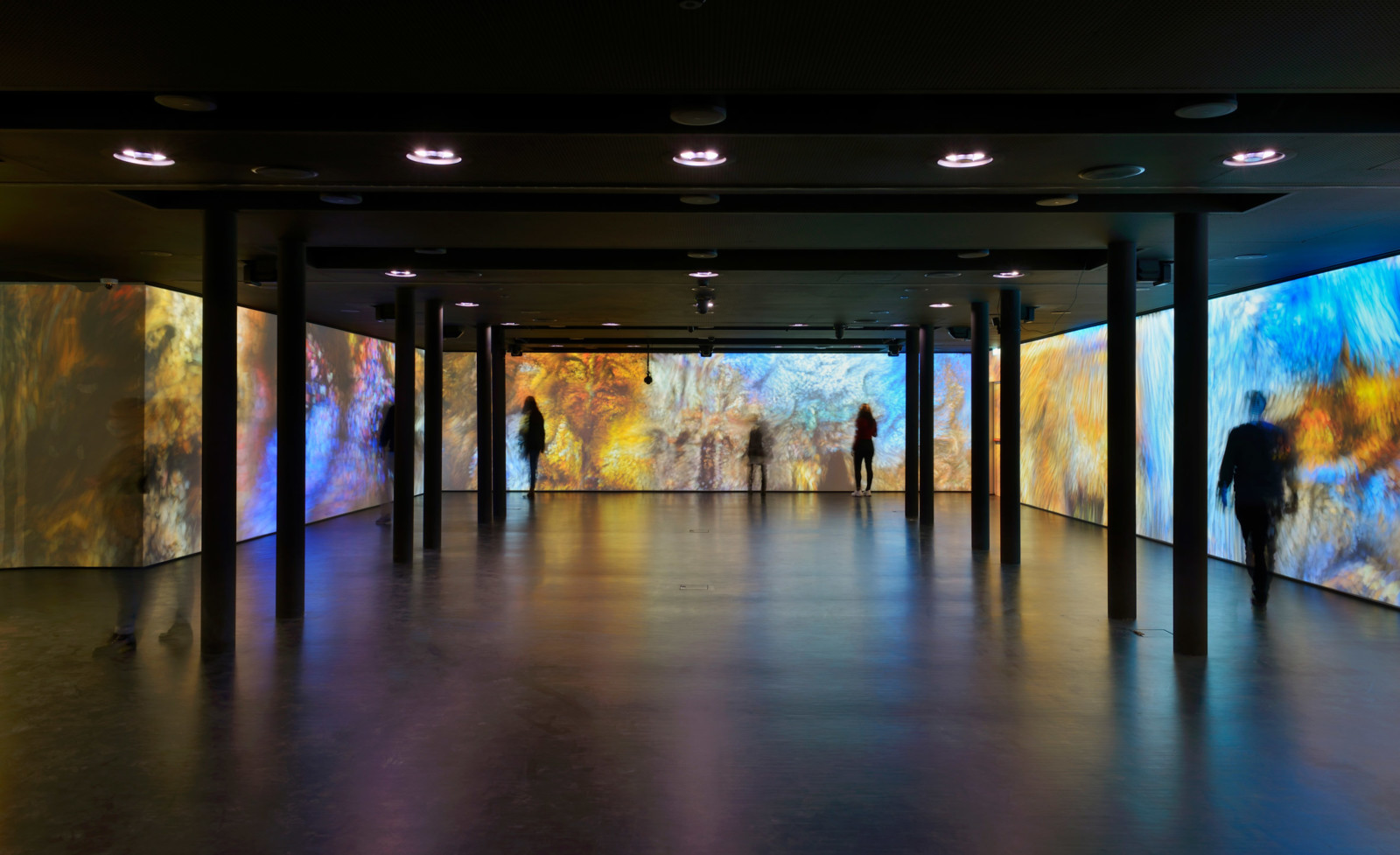
“From the onset, the client asked us: MEET could be a totally digital platform, so what should be the role of physical space?” Ratti said.
After discussions with the MEET leadership, Rota, and other architects, sociologists, and philosophers, Ratti says they came to the conclusion that physical spaces can function as an antidote to the homophily – the tendency for people to be drawn to those who are similar to themselves – of the digital world.
“從一開始,客戶就問我們:MEET可能是一個完全數字化的平台,那麼物理空間應該扮演什麼角色?” 拉蒂說。
在與MEET領導,Rota以及其他建築師,社會學家和哲學家進行討論之後,拉蒂說,他們得出的結論是,物理空間可以充當同質異味劑的解毒劑–人們傾向於被那些與 自己–數字世界。
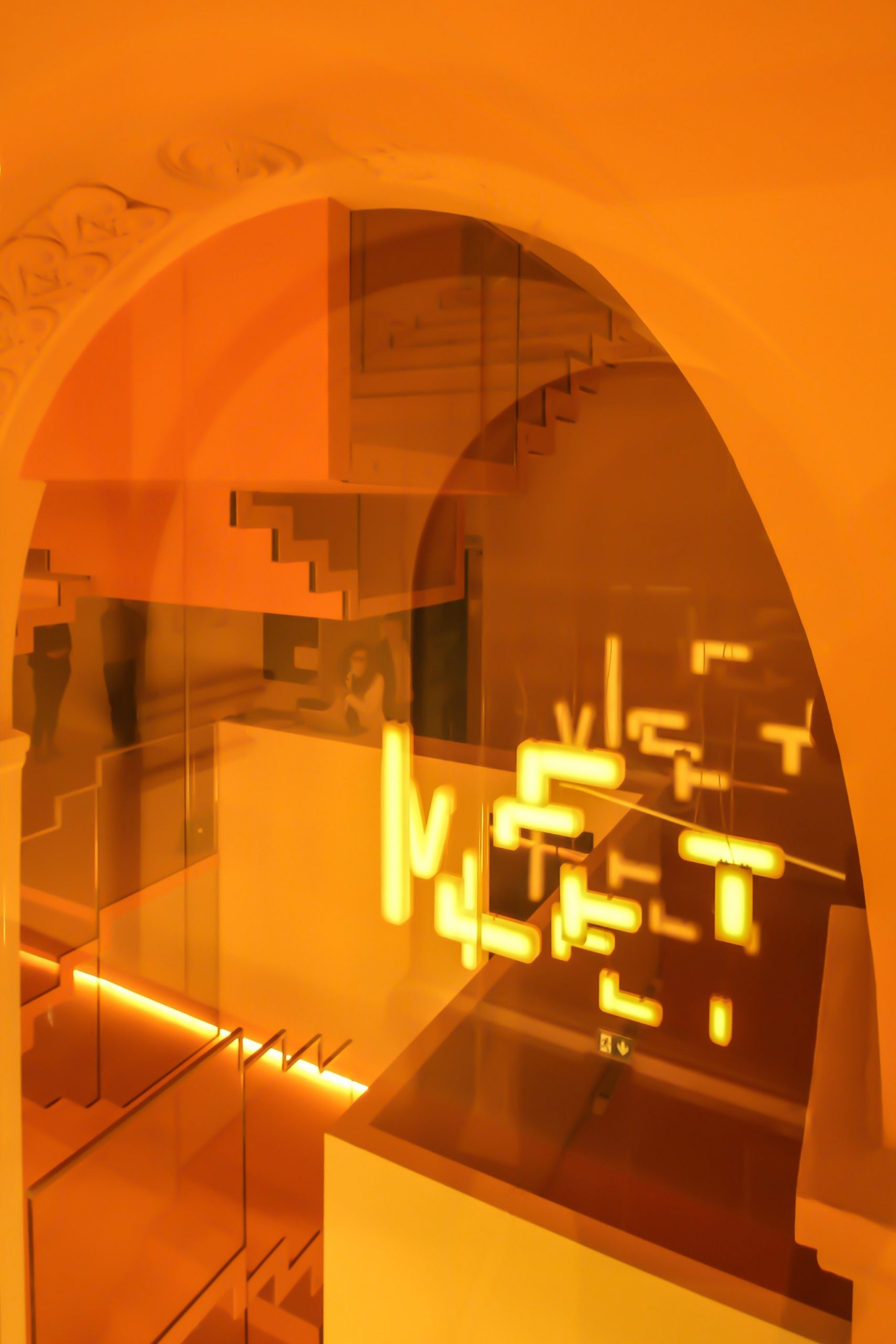
“The internet encourages us to algorithmically filter out individuals and ideas that challenge our comfort zone, trapping us within ideological echo chambers that are worsening polarisation,” Ratti said.
“Social media easily connects like-minded individuals, but rarely starts those serendipitous conversations that a functioning community needs.”
“The physical space of MEET should counter all of the above. It should maximise serendipitous encounters, which can lead to creativity and knowledge-sharing.”
拉蒂說:“互聯網鼓勵我們從算法上過濾掉挑戰我們舒適區的個人和想法,將我們困在意識形態迴聲室內,這會加劇極化。”
“社交媒體很容易將志趣相投的人聯繫在一起,但很少啟動功能正常的社區所需的偶然對話。”
“ MEET的物理空間應針對上述所有問題。它應使偶然的相遇最大化,這可能導致創造力和知識共享。”
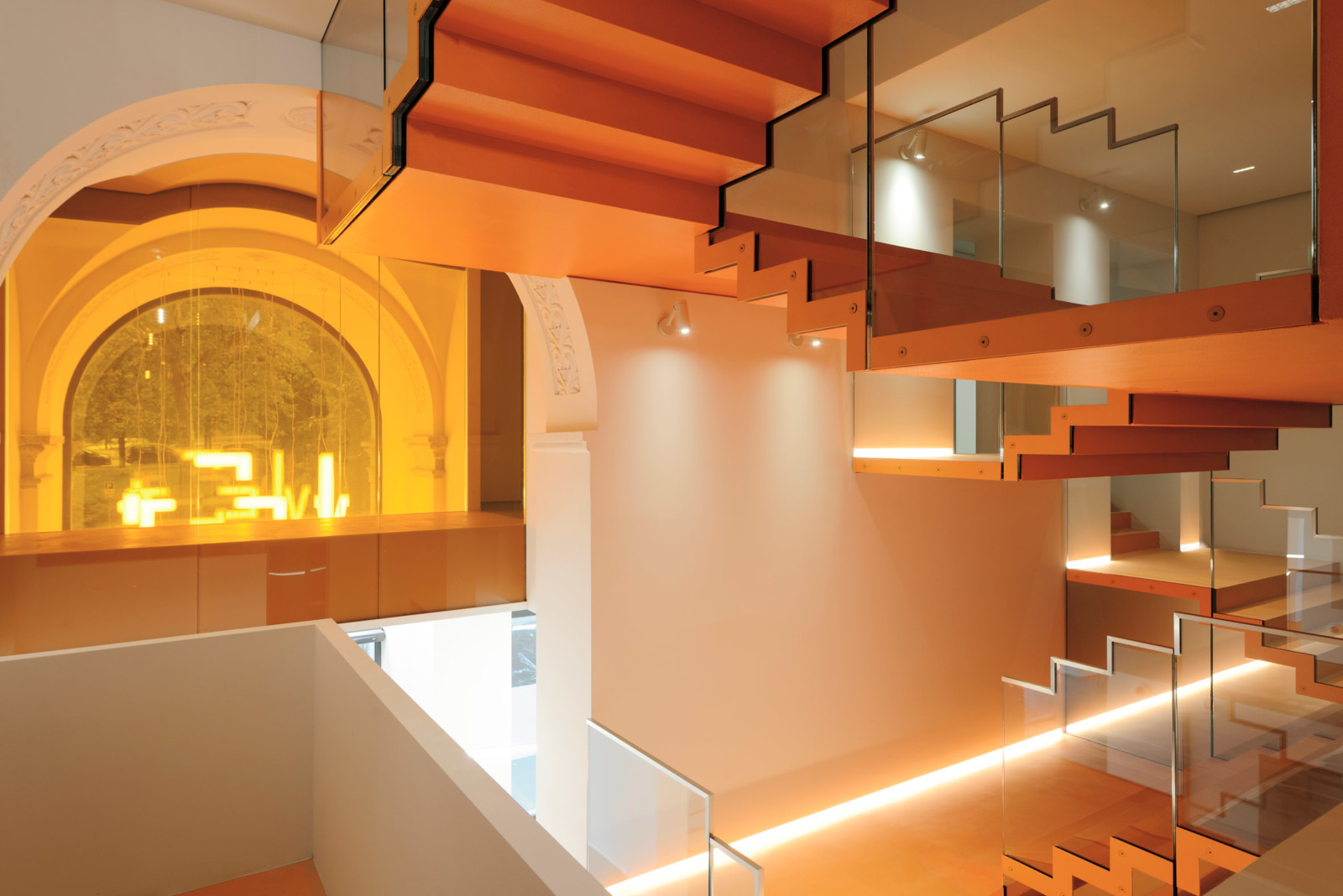
It was to fulfil this vision that the studio created the central, vertical plaza, which features a vibrant resin-coated steel staircase. Ratti aimed to innovate on the material fabrication process by using digital tools.
“The stairwell was digitally fabricated using an innovative laser-cut steel sandwich we developed – which allows it to cover significant spans with an extremely thin section,” he explained.
為了實現這一願景,工作室創建了中央垂直廣場,該廣場設有充滿活力的樹脂塗層鋼製樓梯。 Ratti旨在通過使用數字工具在材料製造工藝方面進行創新。
他解釋說:“樓梯間採用我們開發的創新型激光切割鋼三明治結構進行了數字化製造-使其能夠以極薄的截面覆蓋很大的跨度。”
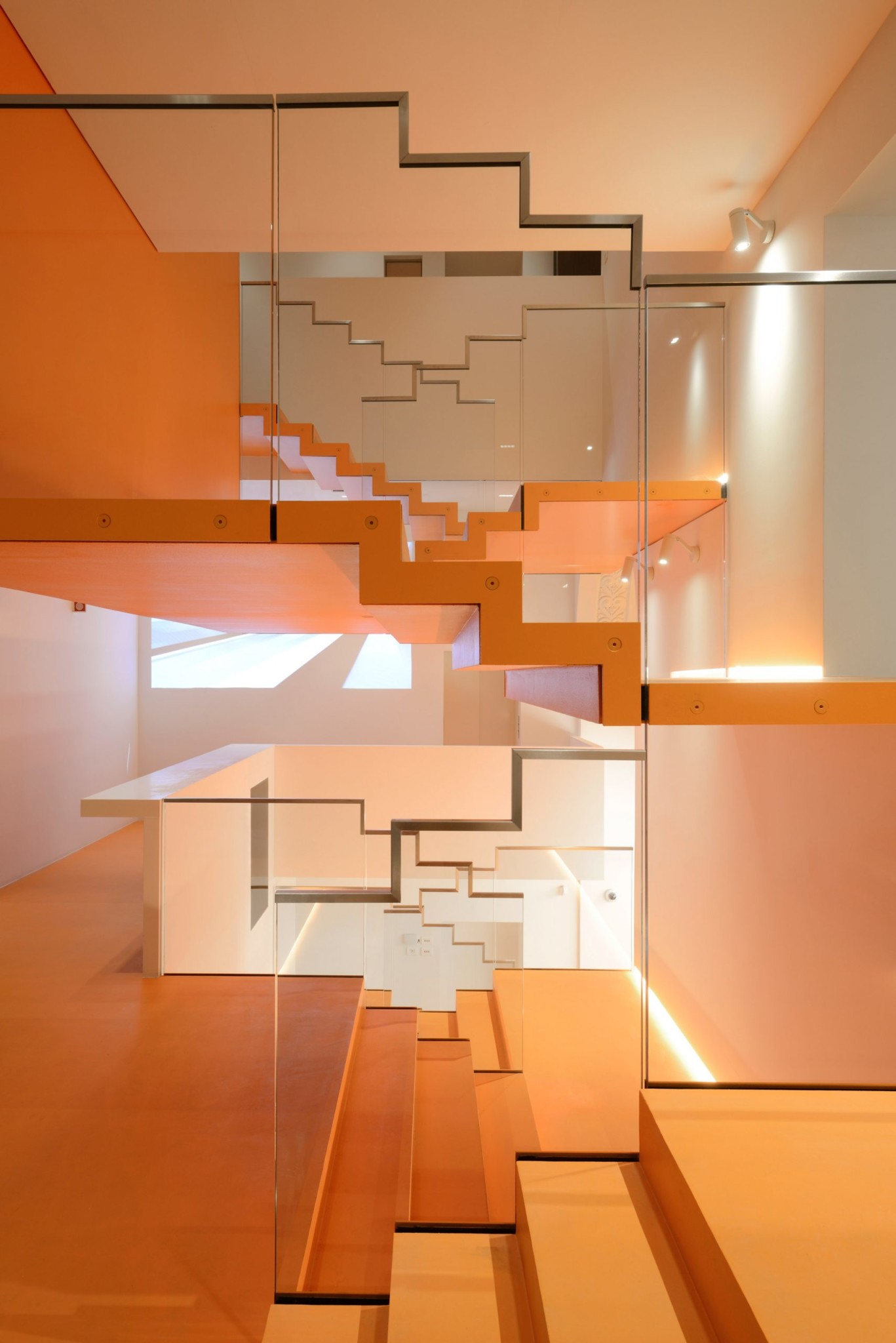
The stairwell features asymmetric landings and moves in a zig-zag fashion to encourage spontaneous meet-ups.
It was also designed as a backdrop for multimedia projections, to help the digital centre’s aim of marrying the physical and digital.
A number of projection systems and screens are scattered across the building so that people can access the MEET’s digital archives in unexpected ways, while still enjoying physical interaction with other people.
樓梯間具有不對稱的著陸點,並呈鋸齒形移動,以鼓勵自發相遇。
它也被設計為多媒體投影的背景,以幫助數字中心將物理與數字結合起來。
建築物上散佈著許多投影系統和屏幕,使人們可以以意想不到的方式訪問MEET的數字檔案館,同時仍然可以與其他人進行物理互動。
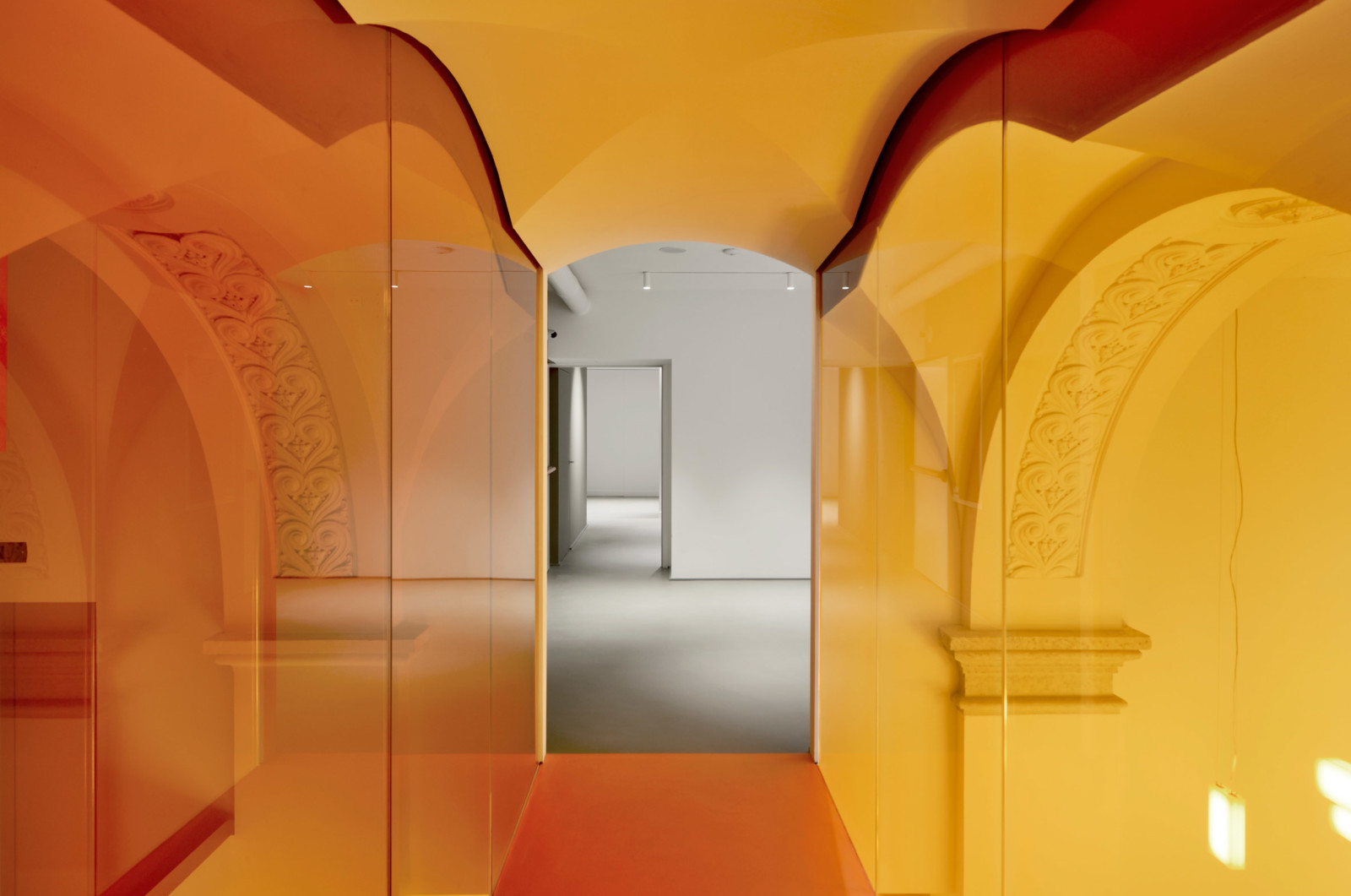
“Since we were forced into widespread lockdowns, we have adopted a new way to live and work in which almost everything is done virtually,” Ratti said.
“But such a lifestyle narrows our social circle. The internet seems to be weak at nurturing what sociologist Mark Granovetter calls ‘weak ties’ – relationships with people exogenous to our tightly-knit social circles – which are crucial for the strength of our social circles.”
拉蒂說:“自從我們被迫實行廣泛的封鎖措施以來,我們採取了一種新的生活和工作方式,幾乎可以完成所有工作。”
“但是這種生活方式縮小了我們的社交圈。互聯網似乎在培育社會學家馬克·格蘭諾維特(Mark Granovetter)所謂的“弱勢紐帶”(弱勢關係)–與我們緊密聯繫的社交圈外來人士的關係–對於我們社交圈的力量至關重要 。”
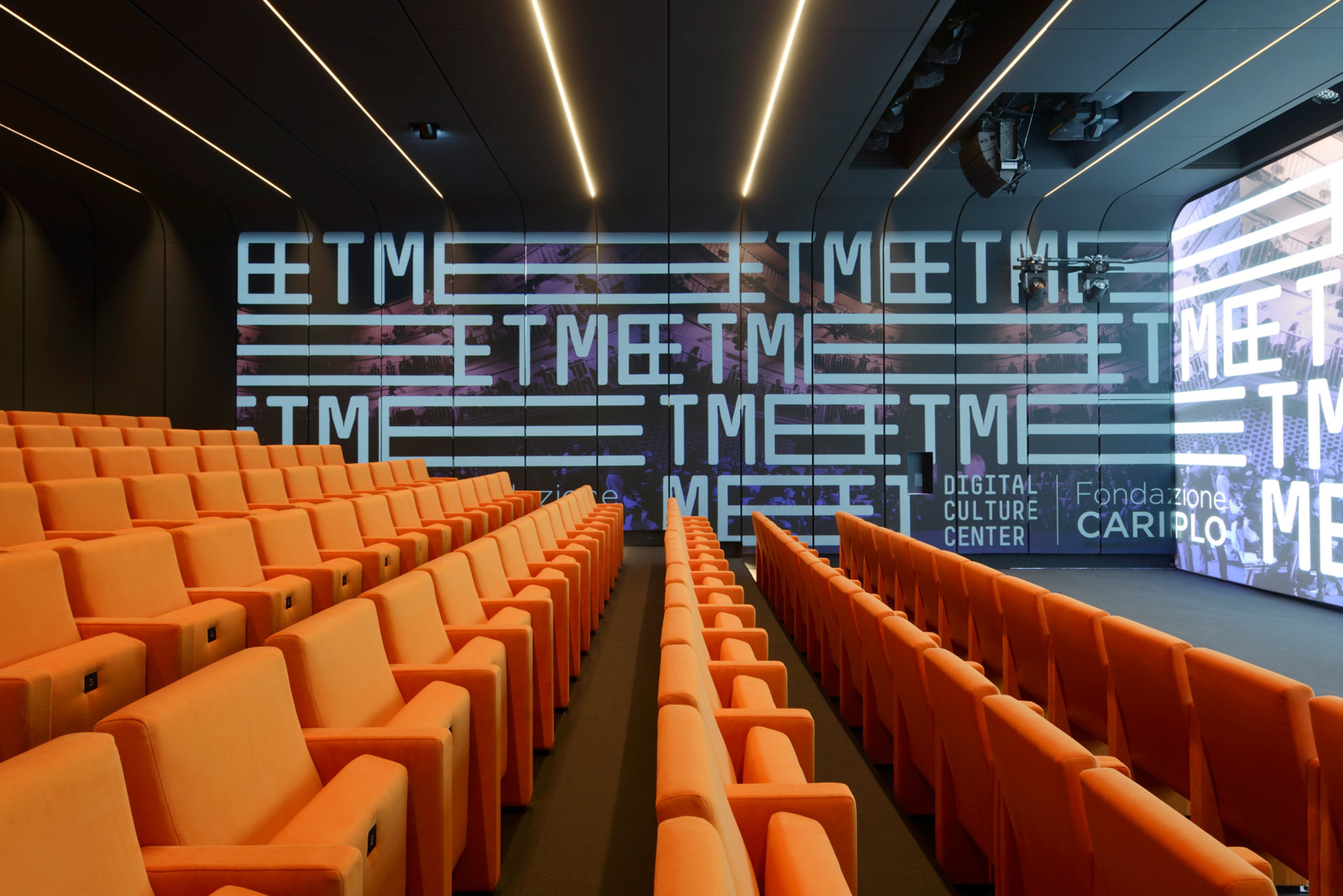
According to Ratti, physical spaces can function as a much-needed way of strengthening social ties.
“Physical space is an antidote to such an effect,” he said.
“I think that as designers we are all called to imagine a new, post-pandemic ‘networked specificity’ – an approach to architecture able to forge new serendipitous connections amongst people and to counter the fault lines of digital communities. ”
Ratti has previously designed multiple pandemic-related projects, including an intensive care unit made from a shipping container that was installed at a Turin hospital and a battery-powered wardrobe purifier that sanitises clothes.
In a live interview for Dezeen’s Virtual Design Festival, the architect said “dinosaur” hospitals and universities need to be redesigned for the post-coronavirus era.
Photography is by Michele Nastasi unless otherwise stated.
拉蒂認為,物理空間可以作為加強社會聯繫的急需方法。
他說:“物理空間是這種作用的解毒劑。”
“我認為,作為設計師,我們都被要求想像一種新的,大流行後的’網絡特異性’-一種能夠在人們之間建立新的偶然聯繫並應對數字社區的錯誤路線的架構方法。”
拉蒂以前曾設計過多個與大流行相關的項目,包括由裝在都靈醫院的運輸容器製成的重症監護室和用電池供電的衣櫃淨化器對衣服進行衛生處理。
在Dezeen虛擬設計節的現場採訪中,這位建築師說,在后冠狀病毒時代,需要重新設計“恐龍”醫院和大學。
除非另有說明,否則攝影由Michele Nastasi負責。
FROM:https://www.dezeen.com/2020/10/29/carlo-ratti-digital-arts-centre-meet-milan-architecture/

